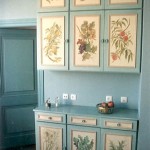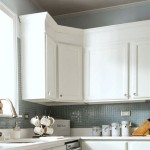```html
Italian Design Kitchen Cabinets: A Synthesis of Style and Function
Italian design kitchen cabinets represent a compelling blend of aesthetics and practicality. These cabinets are not merely storage solutions; they are integral elements of a kitchen's overall design, reflecting a cultural emphasis on both functionality and visual appeal. Understanding the defining characteristics of Italian design in kitchen cabinetry requires an examination of materials, construction techniques, and enduring design philosophies.
The influence of Italian design extends beyond the purely decorative. It emphasizes ergonomic considerations, aiming to optimize the user's experience within the kitchen space. This holistic approach contributes to the enduring popularity of Italian kitchen cabinets, making them a sought-after choice for homeowners and designers worldwide.
Materials and Craftsmanship: The Foundation of Italian Kitchen Cabinets
The selection of materials is paramount in Italian kitchen cabinetry. Emphasis is placed on high-quality, durable components that not only withstand daily use but also contribute to the overall aesthetic. Solid wood, often sourced sustainably, is a common choice for cabinet frames and doors. Popular wood species include walnut, oak, and cherry, each offering a unique grain pattern and coloration.
Veneers, applied to engineered wood substrates like plywood or MDF (Medium-Density Fiberboard), are also frequently utilized. Veneers offer a cost-effective alternative to solid wood while still providing the desired wood grain appearance. High-quality veneers are carefully selected and applied to ensure a seamless and visually appealing surface.
Beyond wood, other materials play a significant role. Glass, particularly frosted or textured glass, is often incorporated into cabinet doors to add visual interest and allow light to penetrate the cabinets. Metal accents, such as stainless steel or brushed aluminum, are used for handles, knobs, and trim, providing a modern, contemporary touch. Countertops, integral to the cabinet design, often feature materials like granite, marble, quartz, or even innovative composites that offer both durability and visual appeal.
Craftsmanship is a crucial element. Italian cabinetmakers are known for their attention to detail and meticulous construction techniques. Joints are carefully fitted and secured, ensuring structural integrity and longevity. Finishes are applied with precision, often involving multiple layers of stain, sealant, and topcoat to achieve a durable and aesthetically pleasing surface. The result is a cabinet that not only looks beautiful but also functions flawlessly for years to come.
Advances in manufacturing technology are also integrated into the production process. Computer Numerical Control (CNC) machines are used for precise cutting and shaping of cabinet components, ensuring accuracy and consistency. However, the human element remains essential, with skilled artisans overseeing the manufacturing process and adding finishing touches that distinguish Italian cabinets from mass-produced alternatives.
Design Principles: Simplicity, Elegance, and Innovation
Italian kitchen cabinet design is characterized by a set of guiding principles that prioritize simplicity, elegance, and innovation. The aesthetic often favors clean lines, minimalist forms, and a focus on functionality. Ornate details are typically avoided in favor of subtle embellishments and high-quality materials.
One key aspect is the integration of the kitchen with the surrounding living space. Open-plan layouts are common, with kitchen cabinets seamlessly blending into the overall design of the home. This often involves using the same materials and finishes throughout the space to create a cohesive and harmonious look.
Ergonomics play a crucial role. Cabinet heights, depths, and configurations are carefully considered to optimize the user's experience. Pull-out shelves, drawer dividers, and other organizational accessories are incorporated to maximize storage space and improve accessibility. The goal is to create a kitchen that is not only beautiful but also highly functional and efficient.
Innovation is another defining characteristic. Italian designers are constantly exploring new materials, technologies, and design concepts. This can include incorporating smart features into the cabinets, such as integrated lighting, touch-activated controls, or even automated opening and closing mechanisms. The aim is to create kitchens that are at the forefront of both design and technology.
Color palettes often reflect natural tones and materials, drawing inspiration from the Italian landscape. Earthy browns, warm grays, and creamy whites are popular choices. However, bolder colors and striking accents are also used to create dramatic focal points. The interplay of light and shadow is carefully considered, with the placement of lighting strategically designed to enhance the textures and colors of the cabinets.
The concept of "sprezzatura," an Italian term that translates to "studied carelessness," is often evident in the design. The goal is to create a look that appears effortless and natural, even though it is the result of careful planning and execution. This involves a subtle attention to detail and a willingness to embrace imperfections, creating a sense of authenticity and character.
Functionality and Storage Solutions: Optimizing the Kitchen Space
While aesthetics are paramount, Italian kitchen cabinets are also designed with a strong emphasis on functionality. Efficient storage solutions are essential for maximizing space and creating a well-organized kitchen. This involves careful planning of cabinet configurations, the incorporation of clever storage accessories, and a focus on ergonomic design.
Pull-out shelves and drawers are commonly used to improve accessibility and make it easier to reach items stored at the back of cabinets. Drawer dividers and organizers help to keep utensils, cookware, and other items neatly arranged. Integrated spice racks and knife blocks are also popular additions.
Corner cabinets, often a challenge in kitchen design, are addressed with innovative solutions such as lazy Susans or pull-out shelving systems. These maximize storage space and make it easier to access items stored in the corners. Tall pantry cabinets are designed to provide ample storage for dry goods and other kitchen essentials.
The design of kitchen islands often incorporates additional storage space, with drawers, shelves, and even built-in appliances. Islands can also serve as a focal point in the kitchen, providing a space for food preparation, dining, or socializing. The use of open shelving is another way to add visual interest and display decorative items.
Waste management systems are also integrated into the cabinet design, with pull-out trash and recycling bins concealed behind cabinet doors. This helps to keep the kitchen clean and organized, while also minimizing odors. The placement of appliances is carefully considered to optimize workflow and create an efficient cooking space.
Lighting plays a crucial role in both functionality and aesthetics. Under-cabinet lighting provides task lighting for countertops and work surfaces, while interior cabinet lighting makes it easier to find items stored inside. Recessed lighting and pendant lights are used to create ambiance and highlight the architectural features of the kitchen.
Ultimately, Italian design kitchen cabinets are a testament to the enduring power of combining form and function. They represent a commitment to quality materials, meticulous craftsmanship, and innovative design principles. By prioritizing both aesthetics and practicality, these cabinets create kitchens that are not only beautiful but also highly functional and enjoyable to use, reflecting the Italian appreciation for both beauty and the art of living well.
```
L Shaped Italian Kitchen Cabinets Blcc20021 Oppolia

Italian Kitchen Design Traditional Style Cabinets Decor Cabinet Styles

Italian Kitchen Cabinets Yamini Kitchens More Cabinetry Design Than 20 Years Offering Beautifull In Miami

Italian Kitchen Design The Timeless Beauty Oppolia

15 Best Italian Kitchen Designs With Pictures In 2024 Design Latest Small

Italian Kitchen Design And Style Inspirations Esperiri Milano

Italian Kitchen Designs For Your N Home Design Cafe

Italian Kitchen Regalo

Modern Italian Kitchens How To Design Them Esperiri Milano

These 3 Gorgeous Italian Kitchens Are The Stuff Of Dreams








